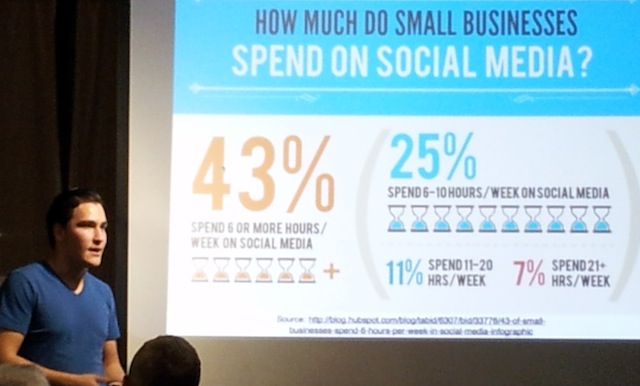In our interconnected world, Google Maps has become an essential tool for navigating our lives. Whether it’s finding the nearest coffee shop, checking traffic conditions, or getting step-by-step directions to a new destination, this app plays a pivotal role. It integrates a vast array of features designed to enhance user experience, but this comes at a cost—data consumption. Understanding how Google Maps utilizes data and learning how to manage it effectively are crucial for optimizing your data plan. This extensive exploration aims to demystify Google Maps’ data consumption, illuminate the factors at play, and offer practical advice for managing your data effectively. By dissecting the various components of the app’s data usage, users can gain a clearer perspective on how to adjust their habits to align with their data plans.
The Intricate Data Architecture Behind Google Maps
Google Maps operates through a complex infrastructure designed to deliver precise and real-time location services. This sophisticated system relies on a vast network of servers and advanced algorithms to process data. When users interact with the app, such as searching for a location or requesting directions, Google Maps communicates with these servers to retrieve and process the needed information. This constant data exchange involves several steps that contribute to data usage. Each interaction with the app, from searching for addresses to exploring satellite views, triggers data requests that cumulatively impact your data consumption.
- Map Tiles and Data Consumption: One significant aspect of data consumption is the downloading of map tiles. These tiles are essentially small chunks of a larger map that are stitched together to create a complete view. The amount of data required depends on factors such as the zoom level and the type of map view selected. Higher-resolution and more zoomed-in views mean more tiles need to be downloaded, leading to increased data consumption. For users who frequently switch between detailed satellite imagery and standard map views, the data usage can accumulate rapidly.
- Data Compression and Updates: Google Maps uses compression algorithms to reduce data needs, but the amount of data can still vary based on the user’s location and map detail required. The compression helps in faster loading times but may not always optimize data use efficiently. Additionally, frequent updates to the mapping services can cause fluctuations in data consumption. These updates include new road changes, updated business listings, and additional features, all of which contribute to the app’s evolving data demands.
Navigational Features: The Data Impact of Real-Time Updates
Google Maps offers an array of navigational features that significantly influence data usage. When users activate turn-by-turn navigation, the app maintains an ongoing connection with Google’s servers to provide real-time updates on route information, traffic conditions, and necessary recalculations. This continuous data flow involves multiple components, including downloading updated map tiles, receiving live traffic data, and recalculating routes based on current conditions.
- Continuous Data Flow: The app downloads updated map tiles, receives live traffic data, and recalculates routes based on current conditions. This constant data exchange ensures users have the most accurate information, but it can lead to substantial data usage, especially during long trips or in high-traffic areas. For instance, if the app detects a traffic jam or road closure, it recalculates the route to suggest a faster alternative. This process requires frequent data exchanges to ensure users receive the most current and accurate information, increasing the overall data consumption.
- Crowd-Sourced Data: The integration of crowd-sourced data also plays a role in data consumption. Google Maps uses information from other users to provide real-time traffic conditions and estimated arrival times, increasing the app’s data requirements. The more users contribute to this pool of data, the more dynamic and responsive the app becomes, but this also escalates data usage. The synergy between user-generated data and real-time updates is a key factor in understanding the overall data footprint of the app.
Offline Maps: A Strategic Approach to Data Management
One effective strategy for managing data usage in Google Maps is utilizing offline maps. This feature allows users to download specific map areas ahead of time, reducing real-time data consumption. Offline maps can be a lifesaver in areas with poor network coverage or for users who wish to avoid data overages.
- Benefits and Limitations: Offline maps offer basic navigation and route planning without live data, which is especially useful for frequent destinations or trips in areas with limited network coverage. However, they do not provide live traffic updates or real-time route adjustments, which can be critical for adjusting travel plans based on current conditions. Users should weigh the trade-offs between having real-time updates and the benefits of offline navigation, considering factors like the nature of their travel and network availability.
- Advantages in Limited Coverage Areas: Offline maps ensure reliable navigation even in areas with scarce internet access, making them a versatile tool for both urban and rural navigation. In remote regions where connectivity is sporadic, preloaded maps can prevent the frustration of being left without navigation options. This makes offline maps not just a convenience but a necessity for travelers venturing into less connected areas.
Device and Setting Variability: How Different Factors Influence Data Usage
The data consumption of Google Maps can vary widely depending on the device used and the settings configured. Different devices have different capabilities, and these can significantly impact how much data is used.
- Device Impact: Modern smartphones with high-resolution screens or advanced GPS capabilities tend to use more data. Larger screens or higher pixel densities require more data for detailed map imagery. This means that users with the latest high-definition devices may experience higher data consumption compared to those with older models. The hardware specifications of your device can, therefore, play a significant role in your overall data usage.
- Settings and Background Data: Settings such as high-resolution imagery or frequent updates can contribute to increased data consumption. Adjusting app permissions and settings can help manage background data usage effectively. Users might also want to disable automatic updates or limit background data usage for Google Maps to keep data consumption in check. Additionally, the app’s settings for data usage can often be tailored to fit individual data plans and usage patterns.
Advanced Features: Augmented Reality and Real-Time Services
Google Maps incorporates several advanced features that impact data consumption, offering enhanced functionality but requiring more data.
- Voice-Activated Navigation: Integration with Google Assistant for voice commands involves additional data exchanges for processing and delivering responses. This feature enables hands-free navigation and can improve the user experience, but it requires a constant data connection to interpret and act on voice commands accurately.
- Augmented Reality (AR) Navigation: AR navigation overlays directional information onto the real-world view through the smartphone’s camera. This functionality demands considerable data processing to accurately render and update AR elements in real-time. The immersive nature of AR navigation makes it a resource-intensive feature, driving up data consumption significantly.
- Real-Time Location Sharing and Public Transit: Sharing your location in real-time with friends or social networks involves regular data updates, which requires continuous communication with Google’s servers. Similarly, public transit features, which offer live updates on schedules and routes, rely on ongoing data retrieval from servers. Frequent use of these advanced features necessitates careful consideration of their impact on overall data consumption.
Managing Data Usage: Practical Tips and Strategies
To manage data usage effectively, users can implement several strategies:
- Leverage Offline Maps: Download maps in advance for frequent destinations or trips to minimize real-time data consumption. This approach is especially useful when traveling to areas where network coverage may be unreliable or nonexistent.
- Adjust App Settings: Opt for standard map views, reduce update frequency, and control app notifications to save data. Adjusting the map’s detail level and turning off non-essential features can also contribute to lower data usage.
- Monitor and Clear Cache: Regularly monitor data usage and clear the app’s cache to reduce unnecessary data consumption. Google Maps stores temporary data to enhance performance and user experience, but clearing this cache can help balance functionality with data management. This practice can be particularly useful for users who want to maintain a balance between functionality and data consumption.
Looking Ahead: The Future of Data Consumption in Navigation Apps
As technology evolves, the data demands of navigation apps like Google Maps are likely to increase. Innovations such as advanced 3D mapping and real-time traffic predictions may contribute to higher data consumption.
- Impact of 5G Technology: The advent of 5G could facilitate more efficient data transfer, potentially reducing overall data consumption, though high-bandwidth applications may lead to increased data use. With faster speeds and lower latency, 5G networks may improve the efficiency of data handling, but the rise in high-resolution content and advanced features may offset these benefits.
- Third-Party App Integration: As more apps integrate with Google Maps, cumulative data consumption may rise. Third-party apps that use Google Maps for location-based services or augmented reality experiences could add to the overall data load. Users will need to be vigilant about their data usage across all applications to manage their data plans effectively.
Striking a Balance: Navigational Efficiency vs. Data Consumption
Finding the right balance between data consumption and navigational efficiency is crucial. High-resolution imagery and real-time updates enhance navigation but come with higher data costs. Users need to carefully consider whether the benefits of these enhancements outweigh the impact on their data plans and usage requirements.
- High-Resolution Maps vs. Data Costs: High-resolution maps and real-time traffic updates offer a more detailed and responsive navigation experience, but they come with higher data costs. Conversely, opting for lower-resolution maps and reducing the frequency of updates can help manage data usage but may result in a less detailed and slower navigation experience.
- Customizing User Experience: By understanding the trade-offs involved and adjusting settings based on individual data limits and navigation requirements, users can find a balance that suits their preferences and needs. This customization allows users to tailor their navigation experience to their specific data constraints, ensuring optimal use of both the app and their data plan.
Conclusion
A comprehensive understanding of Google Maps’ data consumption is essential for effective mobile data management. By examining the app’s operational mechanics, assessing the impact of various features, and implementing practical strategies, users can balance effective navigation with data management. Utilizing offline maps, adjusting app settings, and monitoring data usage are practical measures that can help users balance their need for effective navigation with their desire to manage data consumption. As technology progresses and new features emerge, staying informed and adaptable will be key to maintaining an optimal navigation experience while managing data efficiently. This proactive approach will ensure that users can enjoy the full benefits of Google Maps without falling victim to unexpected data overages.


